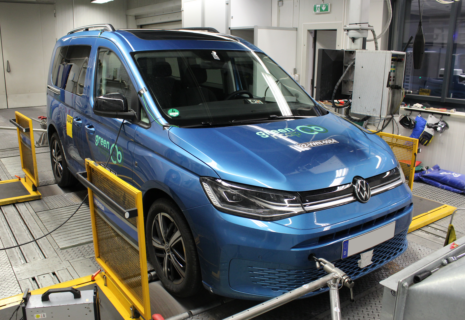VW Caddy 1.5 TSI petrol FWD manual
2022
44%
6.4
10
Clean Air Index
4.3
10
Energy Efficiency Index
2.6
10
Greenhouse Gas Index
| Laboratory Tests | NMHC | NOX | NH3 | CO | PN | |
|---|---|---|---|---|---|---|
| 5.610 | Cold Test | |||||
| 7.410 | Warm Test | |||||
| 5.610 | Highway | |||||
| Cold Ambient Test | Does not qualify for additional robustness testing | |||||
| Road Test | ||||||
| 7.310 | On-Road Drive | |||||
| 2.95 | On-Road Short Trip | |||||
| On-Road Heavy Load | Does not qualify for additional robustness testing | |||||
| On-Road Light Load | Does not qualify for additional robustness testing | |||||
| Congestion | Does not qualify for additional robustness testing | |||||
| Laboratory Tests | Energy | |||
|---|---|---|---|---|
| 4.910 | Cold Test | |||
| 5.210 | Warm Test | |||
| 2.910 | Highway | |||
| Cold Ambient Test | Does not qualify for additional robustness testing | |||
| Consumption | Driving Range | |||
| Average | 6.9l100 km | 735km | ||
| Worst-Case | 8.1l100 km | 618km | ||
| Greenhouse Gases | CO2 | N2O | CH4 | |
|---|---|---|---|---|
| 3.410 | Cold Test | |||
| 3.810 | Warm Test | |||
| 0.710 | Highway | |||
| Cold Ambient Test | Does not qualify for additional robustness testing | |||
Specifications
- Tested Car WV2ZZZSKZMX03XXXX
- Publication Date 06 2022
- Vehicle Class Small MPV
- Emissions Class Euro 6d AP
- Tyres 215/55 R17
- Mass 1,567 kg
- Engine Size 1,498 cc
- Power/Torque 84 kW/220 Nm
- Declared CO2 147 g/km
- Declared Consumption 6.5 l/100 km





























































































































































Our verdict
August 2023: The result of this car been updated. Previously reported Ammonia (NH3) values were incorrect owing to a technical error with the equipment at the test laboratory and a correction has been applied.
The Caddy enters Green NCAP's tests with a disadvantage due to its un-aerodynamic body. As a result, high CO2 amounts are emitted, although the results are as expected for this type of petrol engine powered vans. Additional effort to better control ammonia (NH3) emissions would result in a higher Clean Air Index. Overall, the Caddy scores creditable 2½ Green stars out of 5 and comes out to be a good allrounder for this type of vehicle.